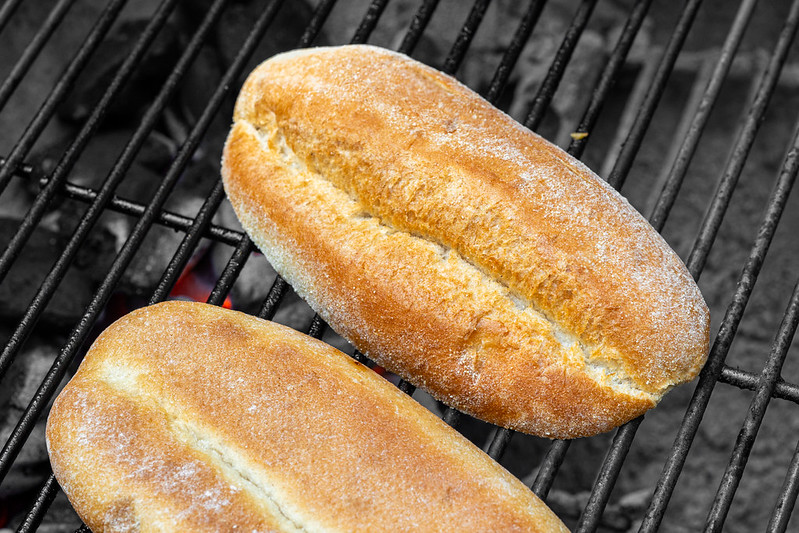Choripán
When I visited Buenos Aires a few years back, it wasn't a coincidence that my hotel was within walking distance from Chori—choripán topped my things I wanted to try while in Argentina and that spot offered lots of different incarnations to chow down on. Choripán isn't a singular thing and exists in various combinations of sausages and toppings in at least a few countries in South America, but in Argentina this dish is mostly going to come in the form of grilled chorizo that's topped with chimichurri and served in a crusty roll. So when I decided to make choripán at home for the first time, I went with that ubiquitous version.
With only three ingredients total in this sandwich, I needed each of them to be pretty spot on. This meant that I was going to have construct my own Argentinian chorizo at home since I had no reliable source for it in my area. This sausage isn't heavy on the ingredients, but the beef and pork mixture seasoned with red wine, black pepper, paprika, garlic, oregano, and nutmeg has a good bite to it that holds up well against the equally strong chimichurri.
I've been making chimichurri as a pairing for beef and empanadas for a long time now and I have tried and true recipe that I have not really wavered from. Recently though, I've been changing up the method just a tad by reserving some of the more coarsely chopping herbs and garlic and adding those back in at the end to get a chimichurri with a more varied texture than the smoother sauce I had been making, which wasn't quite as traditional.
While I set out to keep this choripán pretty true to its origins, I did rely on the sausage cooking method that has led to the best results for me, but isn't what you would find happening on grills in Argentina. I like to braise my links first, which both helps cook the sausages more evenly throughout, as well as acts as an insurance policy from overcooking. Before I adopted this method, it wasn't uncommon for me to have various cooking issues with sausages—they were either over or undercooked, burst open, got overly charred, etc. After switching to braising first, I've never had any of those issues, so I've stuck to using it without fail, even if it breaks from tradition.
Once the internal temperature of the sausages hit around 140°F in the braise, that's when the links were moved over direct heat to get some color on the outside and to finish cooking. For choripán, I've always seen the links split and grilled too, so I followed suit and got some browning on the cut side of the meat as well.
The hardest part of this recipe was actually finding the right bread to use. I picked up a few different roll choices to try out, and of those, Portuguese rolls were the clear winner by having the right size, chew, and crustiness close to what I recalled eating in Buenos Aires. The bread was best too when brushed with a little olive oil and grilled before the assembly into sandwiches with the chorizo and chimichurri.
Choripán is one of those simple dishes that tastes absolutely right with no additions. I'm happy to say that the incarnation I cooked up delivered that feeling starting with a sausage that had a good peppery kick and a noticeable taste of the grill, then the chimichurri whose initial freshness got overtaken by the sharpness of vinegar and garlic, and finally the toasty bread that offered the crunch and heft to make a single sandwich either a filling snack or light meal. Now one of the reasons why I really liked Chori so much was because they offered choripáns that went beyond the standard bearer, so now that I have that base covered, I can't wait to see where I go with choripán next.









